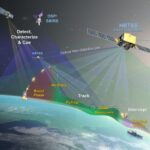
Days after a scathing report deemed the Sea-based X-band radar a flop, the deputy director of the Missile Defense Agency came to the defense of the platform on April 7, calling it an important capability in dealing with foreign provocations.“I can tell you from the warfighters’ perspective, the operational perspective, it's absolutely the most important sensor that we have in our tool kit when the sabers were being rattled anywhere in the world, but particularly with North Korea,” said Air…











